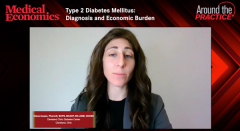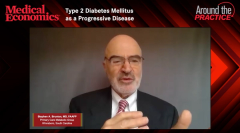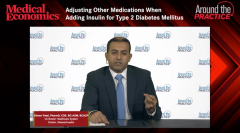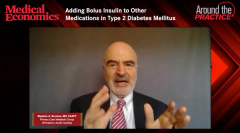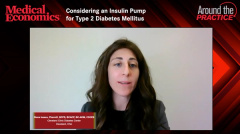
Where does insulin fit?
Episodes in this series

Dhiren Patel, PharmD, CDE, BC-ADM, BCACP: Each of you touched on it, but I sometimes get the question from my team: “You’re telling me about all these drugs, and you’re telling me about insulin. Just tell me what to do, and I’ll do it.” We’ve all heard that. When you guys are thinking about starting insulin therapy, what are some of the factors you consider in a patient? I know that each of you touched on it, but is it the number of medications that they’re on? Are you looking at A1C [glycated hemoglobin]? Could it be a combination? Walk us through it. Dr Brunton, you talked about that in the beginning as well. If the patient has 50% to 80% beta cell function that’s lost, my approach might be a little different.
If you were presenting or talking to pharmacy residents, fellows, or first-year folks, and you need a crash course on where insulin falls within the toolbox, what would your talking points for them be?
Stephen A. Brunton, MD, FAAFP: We [at Primary Care Metabolic Group] might have a different approach. Once again, we need to recognize that it’s a chronic disease and that we see patients later on in the progression. As we mentioned, it’s a progressive disease, so the longer the patient has diabetes, the more likely they are going to need insulin.
It also depends on what other medication they’re on. If they’re on multiple oral medications, it’s time to start looking to progress that. As I mentioned, if the A1C is uncontrolled, then you may have a process of glucotoxicity, or they’re just not going to get down far enough. If they have an A1C above 9%, you may need to use insulin just to get them down toward the target.
Robert Busch, MD: If I’ve treated pathophysiologically, and the patient is on GLP, SGLT2, and metformin, and if they can afford it, the SGLT-metformin pill is a combination. The patient would be taking 1 or 2 pills in the morning with the combination pill and a GLP, they’re not on a lot of other pills other than their RAS inhibitors and their statin, so they’re on a lot of pills already. As you know, for some of our patients, I’ll ask, “What do you have breakfast?” They’ll answer “pills” because they’re on the RAS, their statin, and everything else.
Once they’re on that, if their fasting level is still high and they’re on GLP, metformin, and SGLT2, I would add basal insulin. Unless their fasting is good there, I’m looking for when they’re high. As Diana said, if if you did a CGM [continuous glucose monitoring] and they’re high postdinner, the biggest meal, then I’d add a bolus insulin.
With the usual patients, they’re high fasting and their A1C is normal, and you already maxed out what they’re going to be on. They’re on their GLP and SGLT2-metformin. You may throw in a little pioglitazone to cover muscle and fat, so you’ve covered the full ominous octet.
If at that point, their A1C is high, where is the hidden high? Is it in the morning or is it later on? As you said, Diana, you do a CGM, and you see exactly where the problem is, and you could add basal insulin. I usually don’t go in and give them that full effect.
Dhiren Patel, PharmD, CDE, BC-ADM, BCACP: This is why all your patients have an A1C of 6.5%.
Robert Busch, MD: That’s the goal. That’s what our PharmD students say: “Why are your sugars better than the ones on the other side that doesn’t have the PharmD police watching it?”
Newsletter
Stay informed and empowered with Medical Economics enewsletter, delivering expert insights, financial strategies, practice management tips and technology trends — tailored for today’s physicians.

